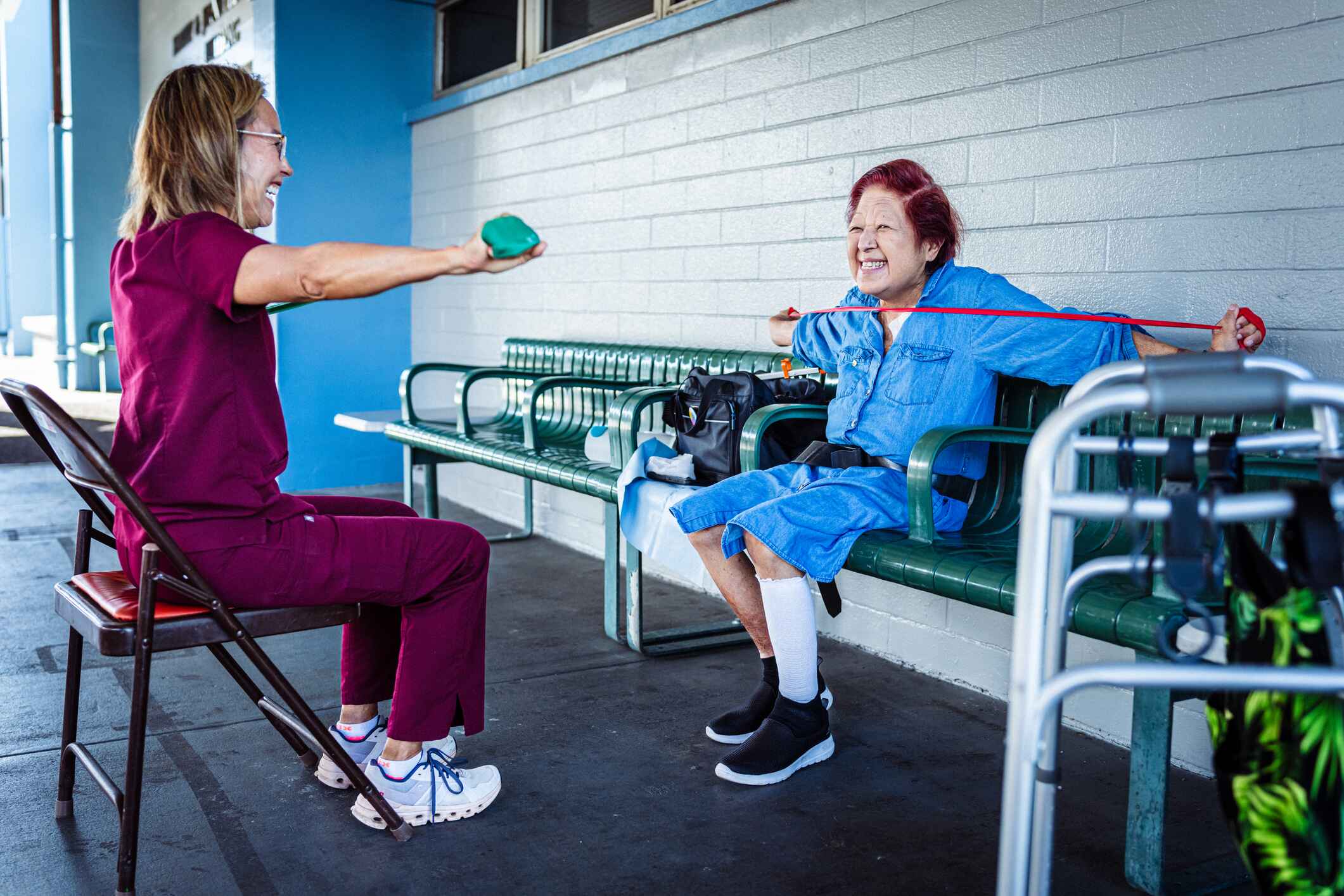
Caring for Pediatric Patients as a Traveling PT: Challenges and Rewards
If you’re a physical therapist with a passion for helping children and a love for adventure, a career in pediatric physical therapy as a traveling PT could be the perfect fit. With the right skills and a drive to make a difference, you can transform the lives of children across the country while enjoying the freedom and flexibility that travel assignments bring.
However, working with kids in varying environments comes with unique challenges and rewards. From adapting to new settings to earning a child’s trust, there’s a lot to consider. This blog dives into the nuances of pediatric physical therapy, highlights actionable strategies for success, and emphasizes the tremendous rewards it offers.
Why Choose Pediatric Physical Therapy as a Traveling PT?
Pediatric physical therapy is one of the most rewarding specialties a PT can pursue. Children require focused, specialized care to overcome developmental challenges, recover from injuries, or manage chronic conditions.
Traveling PT jobs, on the other hand, provide a dynamic way to work in new locations, meet varying healthcare needs, and grow your professional skills. The combination of both creates an exciting and meaningful career opportunity.
Beyond personal and professional fulfillment, travel PT roles often come with enticing perks:
- Competitive compensation packages, including housing stipends
- Travel reimbursements and flexible scheduling
- Opportunities to work in top-rated facilities across diverse geographical regions
At the heart of it all is the chance to touch a child's life in a significant way while exploring the country.
Challenges of Pediatric Physical Therapy on the Go
While the rewards are plenty, traveling pediatric physical therapists face their share of unique challenges:
1. Adapting to New Pediatric Settings
Every setting, school, or clinic you work in has its own protocols and cultures. For example, some schools may have established IEP (Individualized Education Program) processes, while others require you to create them from scratch. Similarly, pediatric rehab centers may operate with varying levels of equipment and staff assistance. Walking into these environments and becoming seamlessly productive requires adaptability and resilience.
2. Building Trust with Young Patients
Working with kids means speaking their language, both literally and emotionally. Children often feel uneasy in medical scenarios, and your role as a traveling PT means you’re meeting them without prior rapport. Earning their confidence takes patience, and success often depends on your ability to create a playful, friendly treatment environment.
3. Balancing Personal Preferences and Facility Expectations
Tailoring care plans for pediatric patients requires balancing evidence-based guidelines with input from parents, caregivers, and facility staff. You may encounter differing opinions on what constitutes progress, which can be challenging to manage when you're temporarily supporting these teams.
4. Managing Constant Moves
One of the realities of travel physical therapy is relocating frequently. While exploring new locales is invigorating, it inevitably involves paperwork for licensure, coordinating travel logistics, and finding temporary housing. For pediatric PTs, this also means transitioning emotional investments with every move—saying goodbye to the little ones you’ve helped can be bittersweet.

Strategies for Success in Travel Pediatric Physical Therapy
With preparation and the right mindset, these challenges can transform into stepping stones in your career. Here are some strategies to help make pediatric physical therapy jobs as a traveling PT both rewarding and seamless:
1. Research Your Assignments Before Arrival
Before starting an assignment, prioritize researching the facility, staff, and expected responsibilities. For example, understand whether you'll primarily serve acute-care needs, work on mobility with children who have developmental conditions, or play a role in sports injury recovery. Familiarizing yourself with these expectations will allow you to hit the ground running.
2. Create Connections Quickly
Working in short-term assignments means you’ll need to build productive relationships quickly—with patients, caregivers, and facility staff. Start by learning children’s names and something personal about them to create a sense of familiarity and comfort. For caregivers or staff, open constant communication channels to ensure everyone stays aligned with treatment plans.
3. Leverage Play Therapy Techniques
Children learn and adapt through play. Incorporate imaginative activities, toys, or games into your treatment plans to make exercises enjoyable and less intimidating for young patients. Challenge their physical abilities subtly, embedding therapy into fun interactions.
For instance, if you’re strengthening lower-limb muscles, turn it into a jumping contest or an obstacle course. Techniques like these encourage participation and build rapport quickly.
4. Tailor Approaches to Cultural and Regional Variances
Each region or community may have different cultural expectations when it comes to healthcare. Approach each patient and family with curiosity and empathy, rather than assumptions. Understanding how societal values influence family dynamics or caregiving decisions will empower you to offer better support.
5. Build Portable Therapy Kits
Not all facilities will have state-of-the-art equipment. Keep a portable kit with versatile tools like resistance bands, soft therapy balls, or light balance props. These can help ensure you deliver consistent care, regardless of the resources on hand.
6. Stay Organized with Regular Reset Days
Traveling PTs juggle clinical responsibilities and the practicalities of relocation. Schedule regular "reset" days to stay on top of licensure paperwork, travel reimbursements, and self-care. Having systems in place for these responsibilities frees you up to focus on what matters most—the children you're helping.
The Benefits of Pursuing Pediatric Travel Physical Therapy
1. Making a Lasting Impact
Nothing compares to seeing a child take their first independent steps, catch a ball again post-recovery, or ride their bike stronger than before. As a pediatric therapist, you're helping lay the foundation for their future independence and confidence.
2. Expanding Professional Skills
With each new assignment, you’ll adapt to different protocols, integrate with diverse teams, and encounter a variety of cases. These experiences stretch and strengthen your ability as a PT, turning you into a more resourceful and well-rounded professional.
3. Building a Network Nationwide
The facilities and healthcare teams you work with form part of a growing professional network. Connections like these can open doors to future opportunities or become valuable references as your career evolves.
4. Exploring New Horizons
Travel assignments take you to unique places, exposing you to different cities, landscapes, and lifestyles. From the vibrant art scenes of Austin, Texas, to the serene mountain ranges of the Pacific Northwest, every stop is an experience.
5. Financial and Career Growth
Many travel physical therapy assignments offer competitive pay, relocation stipends, and additional perks. Beyond that, consistently expanding your skill set and taking on challenging assignments helps position you as a leader in the PT industry.
Take the Leap into a Rewarding Career
Choosing a career in pediatric physical therapy jobs as a traveling PT can be as challenging as it is rewarding. From adapting to diverse environments to impacting young lives, the experience is unparalleled. With a solid commitment to growth and empathy, you can build a fulfilling, exciting career that makes a difference.
If you're ready to discover the opportunities waiting for you, explore open travel PT positions at AMN Healthcare. Take the first step and transform your career into one filled with discovery, impact, and adventure.
Latest News
How Travel OTs Can Stay Up to Date with Industry Trends
Discover how travel OTs can stay updated with industry trends, grow professionally, and find the best paying OT jobs. Strategies for success in 600 words.
Top Challenges Travel SLPs Face and How to Overcome Them
Discover the top challenges travel SLPs face and how to overcome them. From documentation to patient engagement, take control of your SLP career today!
How to Nail Your First Patient Visit: Travel PT Edition
Effective tips for travel physical therapists on their first patient visit. Learn about preparation, assessments, and top travel therapy companies for PT jobs.
How to Ensure a Smooth Handoff in Temporary Assignments for OTs
Learn how travel OTs ensure continuity of care during temporary assignments, with best practices to support patients and prepare for the next opportunity.
Managing Pain and Rehabilitation Across Different Patient Populations
Learn how travel PTs manage chronic pain, rehab post-surgery, and address neurological conditions—all while adapting to new settings.
Navigating Therapist Shortages: How Travel Therapists Can Fill Gaps and Lead Change
Learn how travel therapists are tackling the therapist shortage, filling critical gaps in care, and leading change. Start your impactful travel career now!
Telehealth for Occupational Therapists in 2025: How to Provide Effective Remote Therapy
Discover how to excel in OT teletherapy. Learn strategies for client engagement, tech tools, and adapting occupational therapy to remote settings effectively.











